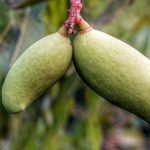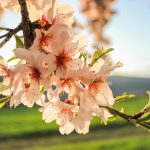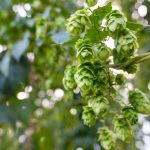
PROFITABLE AND GROWING CROPS: BLUEBERRIES
Although wild fruits have always been appreciated by man, it has only been in recent years that interest in these products has begun to reawaken, due to their natural origin. However, in order to cope with the growing market demand, cultivation has started to be established, thus increasing the production levels, so far obtained only from wild plants. The United States is the largest producer, consumer, exporter and importer, along with Canada, although Canada’s production is mostly from the wild. Between them, they account for 90% of the total production area. Spain is one of the main European producers. As with the other crops explained above, it is necessary to bear in mind that the market fluctuates over time. In this case, the high profitability of this crop is guaranteed in the short term, as it is currently in fashion, but this situation could undergo changes.
General characteristics
Bilberries are the fruits obtained from a series of shrubby and rarely arboreal plants, which are grouped in the genus Vaccinium. A classification can be made between those species whose fruits are exploited in the wild and those species that are more exploited agronomically. The former include V. myrtillus (European blueberry), V. macrocarpon (American cranberry) and V. angustifolium (low blueberry), while the latter group includes V. corymbosum (blueberry) and V. ashei (rabbit’s eye blueberry). There are species of cranberry that form part of the subgenus Oxycoccus, whose taxonomic classification is under discussion, as some botanists consider it to be an independent genus, as is the case of the American cranberry (V. macrocarpon), whose properties in relation to the treatment and prevention of urinary tract infections are currently being widely studied.
This publication is devoted to those of agricultural interest, i.e. those belonging to the second group. The blueberry (V. corymbosum) is native to North America and eastern Canada, although it is naturalised in other regions around the globe. As its name indicates (highbush), it is a large species, which can reach a height of 2.5 m, although, as a general rule, it is recommended that it does not exceed 2 m, thus facilitating the tasks to be carried out, such as harvesting, methods of control of the different pests and pathologies that can affect the crop and pruning. V. ashei is a species native to the south-eastern United States of America, whose height can exceed 4 m, which is limited in agriculture, as it is impractical. Although there are certain botanical differences between the two species, especially in terms of habitat. In terms of morphology they are very similar, so for this section of the general morphological description reference will be made to the characteristics of V. corymbosum.
The root system is superficial, which means that approximately 80% of the roots are distributed in the first 40 cm of soil. One of the most characteristic features of the fine, fibrous roots is that they lack absorbent hairs, which hinders water absorption, which in times of scarcity can jeopardise the optimal development of the plant. Despite this, it should be borne in mind that they are very vulnerable to waterlogging, which is related to root asphyxia. Between the roots and the aerial part is the crown, which is responsible for producing shoots that ensure continuous renewal of the aerial part. It is very common to find mycorrhizal plants, i.e. forming mutualistic associations with certain soil fungi.
The number of flower buds that can be found on a single branch depends on the thickness of the branch, the cultivar, the cultivation techniques and the influence of growth regulators. The flowers, which can be classified as axillary or terminal, are grouped in clusters.
The fruit is a spherical false berry, the seed content of which varies according to the size of the fruit. As the ripening process progresses, its colour changes and the epidermis is covered by waxy secretions. On a commercial level, there are two characteristics of great value: the scar that remains on the upper part when it separates from the stalk, which must be small and dry, making it difficult for pathogens to enter; and the firmness.
Environmental conditions
There are a series of criteria that determine the choice of variety when starting a new crop, which are the climatic conditions, the ripening period, the destination of the fruit, the resistance of the fruit to handling, the type of harvesting and the resistance to pests and diseases, among others. Of all of them, the most important is related to climatic conditions, specifically to the requirement in chilling hours, so that the plants must be subjected to low temperatures for a certain period of time to break the resting period, the duration of which depends on the variety. V. corymbosum is considered a species with high chilling requirements and can tolerate extreme winters. As a consequence, it has a very concentrated flowering and fruit ripening. V. ashei has lower requirements, i.e. it is more suitable for regions with milder winters and longer summers, which may or may not be hotter. There are also varieties that do not require a certain number of chilling hours.
As described above, the characteristics of the root system make it very vulnerable to both drought and waterlogging. The optimum situation for its development is that a certain degree of humidity is continuously maintained in the first centimetres of the soil, which does not occupy all the pores in order to guarantee the entry of oxygen. If there is a water deficit at key times, productivity can be seriously affected. Likewise, rainfall in excess of 75 mm during the flowering season can cause a massive drop in the number of buds set.
One of the most important factors to be taken into account is the wind, which results in the fall of the fruit and the appearance of scratches on their surface, which diminish their commercial quality, and may also damage the growth of smaller plants.
In relation to the soil, it has a series of more specific requirements than other fruit crops, some of which are very decisive, such as pH. From pH values above 5.8, production levels are greatly compromised, the ideal value being between 4.5 and 5.5. Since the roots are shallow and moisture retention is required as well as good drainage, with very good oxygenation, it is established that very light textured soils are required, i.e. sandy or sandy loam. The silt content should be low and the percentage of clay should always be below 20%. It also requires high levels of organic matter.
Management
The choice of the system to be implemented (irrigation or rainfed) depends on the water balance of the plants, which in turn is related to factors such as climate, air temperature, sunshine, relative humidity, plant age and soil type, among others. In short, if the plant requires more water than it can find in the soil, an irrigation system must be set up. Given that it is essential to avoid continuous waterlogging of the soil to prevent the roots from suffocating, as well as an increase in the incidence of certain pathologies, the most recommended irrigation systems are drip irrigation or micro-sprinkling, which allow water to be saved, as it is used more efficiently. They also reduce the appearance of adventitious species in the alleys between plants, as it is a localised irrigation system. Irrigation applications should therefore be carried out in such a way that the first 15-30 cm of the soil is always maintained with a certain degree of humidity, where most of the roots are located. At critical moments such as thickening and ripening in adult plantations and the beginning of flower induction or flower bud formation, drought can have serious consequences.
Once the model to be implemented has been decided, the planting frame must be designed, a decisive point, as it will have a great influence on the correct development of the plants. On small farms where the use of agricultural machinery is not essential, the planting spacing can be 0.60-1 m between plants and 2-2.5 m between rows. In the case of larger crops, the spacing between rows should be at least 3-3.5 m. These spacings can be reduced, as long as the development of the plant is not compromised at any time by competing with another plant for resources.
Pruning
Pruning is carried out with two main objectives, which are to maintain a harmonious and well-balanced development of the canopy, ensuring a uniform incidence of sunlight on all parts; and to guarantee a balance between production levels and the correct development of the rest of the tree, as well as in relation to the quality of the fruit. In this crop, a classification can be made between formation pruning, fruiting pruning and green pruning. Formative pruning is that which is carried out in the early stages of growth, determining the desired shape of the plant, i.e. it helps to define the final structure of the plant. It also seeks to encourage the growth of the root system, thus balancing the growth of its aerial part, eliminating the flowers that the plant has already developed in the nursery. Blueberries have the particularity of stopping root growth during the flowering process, which is why pruning is essential to ensure the development of the root system in the early stages. From the third year of planting, fruiting or production pruning begins, which, as its name suggests, aims to improve production levels by eliminating old, damaged or insufficiently productive branches and replacing them with younger ones. Finally, green pruning, which is carried out throughout the vegetative development period with different purposes, such as controlling the size of vigorous shoots or regulating the excessive number of more or less advanced flower buds and even fruit of small diameter.
Pests and diseases
Cacoecia (Cacoecimorpha pronubana Húber): a highly polyphagous lepidopteran species whose adults have reddish-brown wings with a series of darker spots that form a V shape when folded. There is sexual dimorphism, with females being larger and lighter in colour. Likewise, females have a limited flight capacity, covering very short distances, unlike males, which are good fliers and remain active during the day. The greenish, oval-shaped eggs are laid in a concentrated arrangement. Between 2 and 6 generations may occur annually. The greyish-green larvae with yellowish pinnules cause damage to plants. They cause leaf distortion and foliage shrinkage, which leads to a decrease in photosynthetic rate, thus affecting normal crop growth and development. Flowers and fruits may also be affected, although to a lesser extent. Remnants of silk threads left over from refuges and droppings or exuviae left behind after moulting lead to a depreciation of the marketable quality of the fruits.
Mealybugs (Aspidiotus sp., Planococcus citri, Coccus hesperidium, Pulvinaria sp., Lepidosaphes ulmi and Icerya purchasi): hemiptera, which in their adult form have a characteristic shell which serves as a protective mechanism and is called a shield. As a rule, they are fairly mobile on the crop, although some juvenile stages have legs with which they can move to different parts of the plant. During the winter they seek refuge in the soil, and in the spring they return to the branches and leaves. Since they are biting insects, they feed on the sap they suck at different levels. They can cause yellowing of leaves and premature fruit drop. They secrete honeydew which encourages attacks by black mould, which forms a black layer on the leaves, similar to soot, which prevents the sun from shining on them, thus reducing photosynthetic activity.
Ground weevil (genus Otiorhynchus): a genus comprising different species of coleopterans, which in the larval stage attack the roots and necks of plants, especially those that are not very well developed. Of these, Brachyrhinus sulcatus F. The adults have dark brown and grey scales on their surface, while the larvae are whitish with a brown head. The shape of the larvae is very characteristic, as they are curved into a C-shape. Initially they are found in the roots, during the earliest stages, and then move on to the leaves, where they feed by nibbling at the edges. It is on the leaves that the eggs are laid, thus initiating a new cycle.
Prodiplosis (Prodiplosis vaccinii Felt.): dipteran insect whose larvae in the first stages have a whitish colouring, which gradually transforms into more orange and yellowish tones, just before the emergence of the adult. During these early stages, they are located inside the vegetative shoots, where they feed. This results in blackening and death of the apices on the youngest shoots. If the infestation reaches very high levels, damage to the closed flower buds can occur, causing a loss of fruit, with associated economic losses. Leaf distortion may also be observed on young leaves. It is sometimes possible to confuse the symptoms of this pest with those caused by lack of irrigation or fungal attacks. The presence of the adult insect has been detected from late spring to late summer.
Aphids (Myzus persicae Sulzer and Aphis gossypii Glover): classified as one of the main pests, as they affect a wide range of crops. Their morphology is not very varied, although their colouring is more diverse, especially yellowish, greenish and black. Although their common name is similar to that of fleas, they are not taxonomically related. In the case of blueberries, they cause different damages, because on the one hand they are sucking insects, i.e. they are able to extract nutrients from the plant; on the other hand, they can alter the existing balance between growth hormones. This results in a complete weakening of the plant, which is associated with a reduction in final production levels. Furthermore, one of the main problems is that they act as vectors for the transmission of different pathologies caused by viruses. These diseases produce a series of physiological and biochemical changes in the plant.
Anthracnose (Colletotrichum sp.): pathogenic fungus, which can affect branches, leaves, flowers and fruits. The most serious damage occurs on the fruits, even inducing their fall, forming dark spots of irregular appearance on their surface, which may join together to form a single spot covering the whole of the fruit. Orange-coloured spores also appear around them. Latent infections may occur on ripe fruits, which become apparent during storage, although infection occurs during flowering. Oval-shaped or irregular brownish spots appear on the leaves, located at the apex, edge or centre. With the passage of time, these may increase in size, giving rise to elongated necrotic areas. In the case of branches, necrotic areas begin to appear at the apex of young shoots, which eventually dry out. It is possible that the plants may dry out completely. Finally, on the flowers, it is manifested in the form of dark spots that become larger and larger, which may eventually cause them to dry up and fall off.
Monilia (Monilia sp.): this is one of the most common diseases in blueberries, produced by a pathogenic fungus, which can cause serious losses in the harvest, even up to 100%, depending on the variety, that is to say, it causes very important economic losses. It affects shoots, leaves, flowers and fruits and its infection can last until the following year’s harvest. The first symptoms can be seen on the leaves, which wilt. The new ones that start to sprout have a pinkish tone that changes to brownish tones. In cases of very severe infections, the leaves and developed shoots fall off during the spring. Damage to the fruits is not clearly visible until maturity, when they turn cream or pink, and may turn to reddish or brownish tones. They may also swell and then shrivel and fall to the ground.
Phytophthora (Phytophthora spp.): a genus comprising various species, all of them oomycetes, which cause wilting and can remain in the soil for several years in the absence of a host, especially in the uppermost layers, on organic substrates such as plant debris and humus. The most favourable factors for its development are high temperatures and an excess of water. In winter, it is found in infected roots, tubers and bulbs or in the soil, in various forms. It is transmitted by wind and rain, which causes it to fall to the ground, where it spreads. It penetrates the host from unprotected surface wounds or natural openings. The root rot it causes can lead to sudden death of the plant or, on the contrary, it can manifest itself as a slow, progressive disease in which there is weak growth and yellowing of the leaf surface, which can even lead to necrosis at the edge of the leaves and leaf drop in the basal areas.
Alternaria (Alternaria sp.): ascomycete fungus classified as one of the main causes of blueberry rot in agriculture. During the winter it is found as mycelium and spores on the fruit as well as on dried shoots from the previous season or on plant debris. Infections, contrary to other pathologies, can occur at any time between the end of flowering and fruit ripening and start through the fruit scar, remaining latent until the fruit reaches maturity, which is why symptoms may not be observed on the farm, developing during storage after harvest. Wind-borne. In contrast to anthracnose, the sunken, infected lesions are covered with a mass of dark green spores. Small brownish spots may appear on the leaves, the progress of which causes the leaf lamina to gradually become necrotic.
Septoria (Septoria sp.): pathogenic fungus, whose infection and development of the disease starts during periods of high relative humidity and temperatures between 20 and 25 ºC, when the conidia sprout from the pycnidia. Subsequently, the disease is spread by wind, splashes caused by rain or irrigation water. Workers’ clothing and tools are also a possible vector of transmission. The first symptoms appear on the leaves, both on the upper and lower surface, where they cause circular spots of variable diameter, light-coloured inside with reddish-brown edges, which carry the sporulating structures (pycnidia). It then progresses to the youngest branches where sunken lesions, also circular and of the same colour, are visible. There may even be total defoliation of the plant. During periods when conditions are not the most suitable for its development, it remains on the remains of infected leaves and in lesions on the stems.
Grey rot or botrytis (Botrytis cinerea): a species of fungus whose greatest incidence occurs during the spring, coinciding with an increase in rainfall and a rise in temperatures. If conditions are not optimal for its development, it remains in the form of sclerotia in the remains of pruning. During the winter it can survive as a saprophyte on the soil surface or on dead organic matter. It is transmitted by water and wind during flowering and around harvest time. For this reason it can be established that it mainly affects the flower clusters and fruit, which it covers with dense masses of greyish dust from the spores, giving them an appearance as if they were mummified. Older parts of the plant are not usually affected. The symptoms are manifested by a wilting of the tips of the youngest shoots, which take on a dark colouring, which may even cover the whole branch. The affected flowers remain on the plant for a long time.






